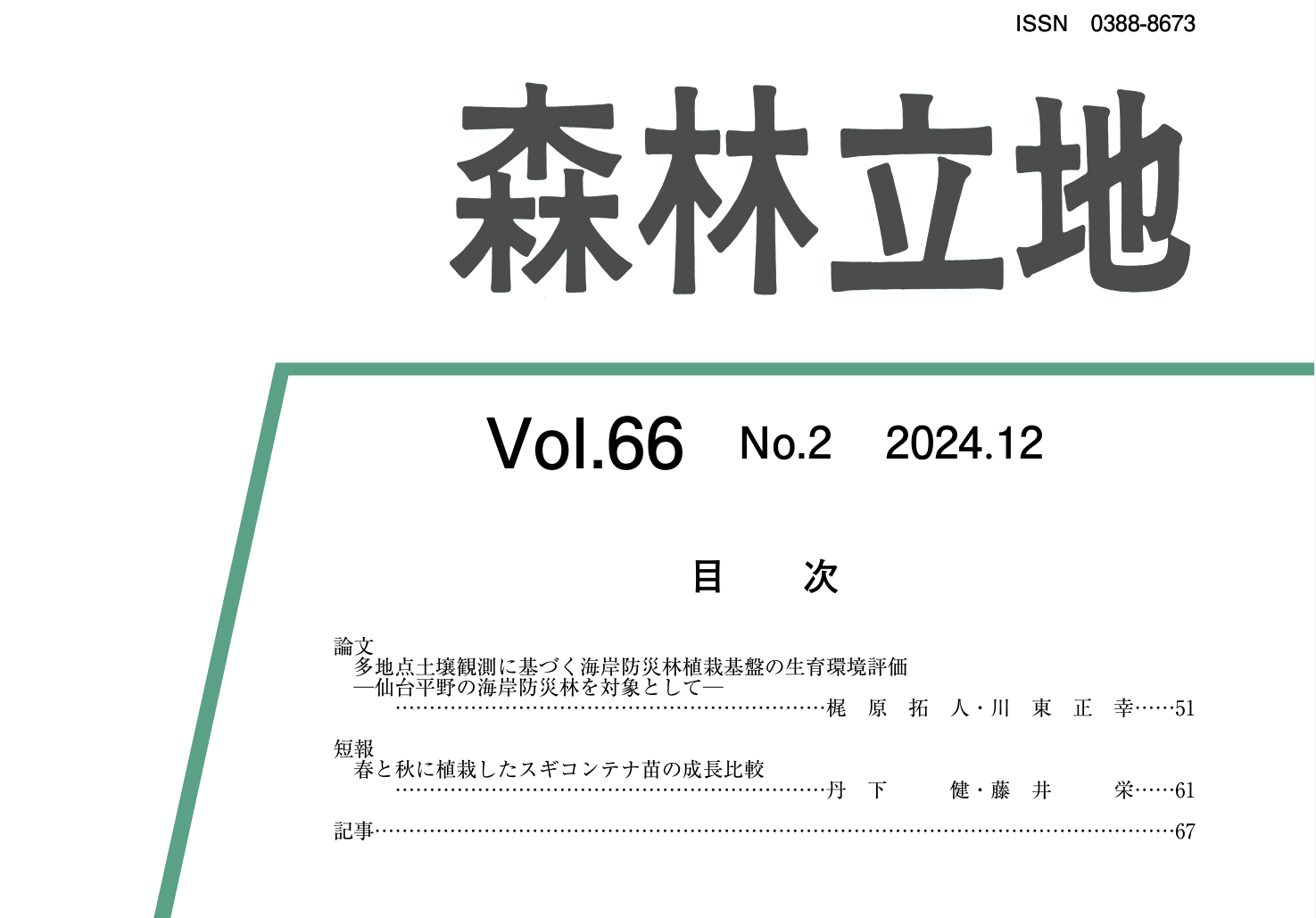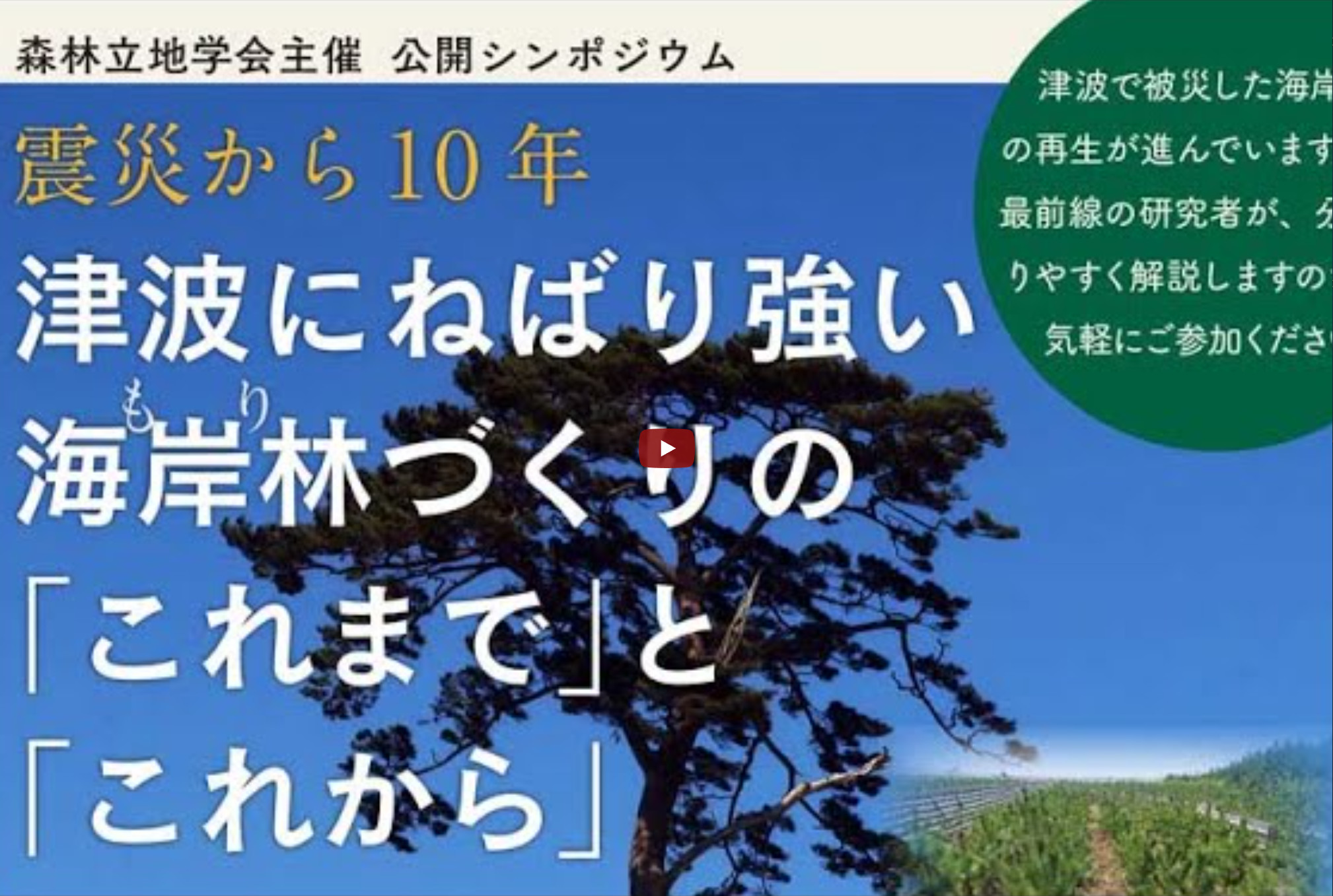森林立地57(1),7~17 2015
Jpn J For Environ 57(1), 7-17, 2015
Biogeochemical Si cycling in bamboo forests with evergreen broad-leaved forest and coniferous forest in a temperate climate
Noriko Ikegami1,Takahiro Satake2,Yasuhide Nagayama2,Kazuyuki Inubushi1
1Graduate School of Horticulture, Chiba University,2Faculty of Life and Environmental Science, Shimane University
Bamboo often invades areas of anthropogenic disturbance in Japan and is Silicon (Si) accumulator. Silicon plays important roles in the global C cycle through silicate weathering and Si fluxes delivered into the ocean as part of the global Si cycle. Terrestrial vegetation influences the global Si cycle. However, there appear to be no reports showing regional terrestrial biogeochemical Si budgets of bamboo forests in a temperate climate. Therefore, in a temperate climate, we established two study sites with two plots each, one plot at each site was selected in forestland that had been invaded and dominated by bamboo and a second at each site in an adjacent evergreen broad-leaved forest or coniferous forest. To better understand the characteristics of biogeochemical Si cycling in bamboo forests, we compared biogeochemical Si cycling in the bamboo forests and other types of forests. Annual Si fluxes by litterfall of the bamboo forests were higher than those of the adjacent other forests. In both sites, the annual Si uptakes were greater in the bamboo forests than in the other forests, and in one site the available Si pool in the soil was also greater in the bamboo forest. We concluded that in the bamboo forests, those amounts of surplus Si to other forests might have been supplied by mineral weathering after bamboo invasion. Therefore, bamboo forests may have characteristics which enhance mineral weathering and dissolved Si release into soil solution from minerals, resulting in greater uptake of Si and return of Si to the soil.
池上倫子,佐竹貴弘,長山泰秀,犬伏和之:温帯における竹林,常緑広葉樹林,針葉樹林のケイ素循環.森林立地57 : 7 – 17, 2015.
日本ではタケが人為の介在した土地へ侵入する現象がよく見られる。タケはケイ素集積植物である。ケイ素は土壌鉱物の風化過程や河川から海へのケイ素流入を通して大気中の炭素濃度の低下に影響を及ぼしている。陸上植生のケイ素循環は河川へのケイ素流入に影響を与えるため更なる測定が求められているが,温帯での竹林のケイ素循環の測定は行われていないようである。タケが優占する森林(竹林)とタケ以外が優占する森林(森林)のケイ素循環 を比較することにより,竹林のケイ素循環の特徴を明らかにさせる可能性が考えられた。そこで本研究では温帯においてタケが侵入することにより成立した竹林と森林を含む調査地を2つ設定して調査地内の竹林と森林のケイ素循環を比較した。竹林のリターフォールによる土壌へのケイ素還元量は森林より高かった。両調査地とも竹林の植生による土壌からのケイ素吸収量は森林より高く,また1調査地において土壌の可給態ケイ素蓄積量は森林より竹林で高かった。これら竹林における森林と比較した吸収量と蓄積量の増分は,タケが竹林プロットへ侵入した後,土壌鉱物の風化によってもたらされた可能性が考えられた。タケは土壌鉱物の風化を促進して土壌へ溶存ケイ素を放出し,その結果,竹林では植生のケイ素吸収量やリターによる土壌へのケイ素還元量が高いという特徴がある可能性が考えられた。
キーワード: 竹林,ケイ素循環,リターフォール,鉱物風化,ケイ素





